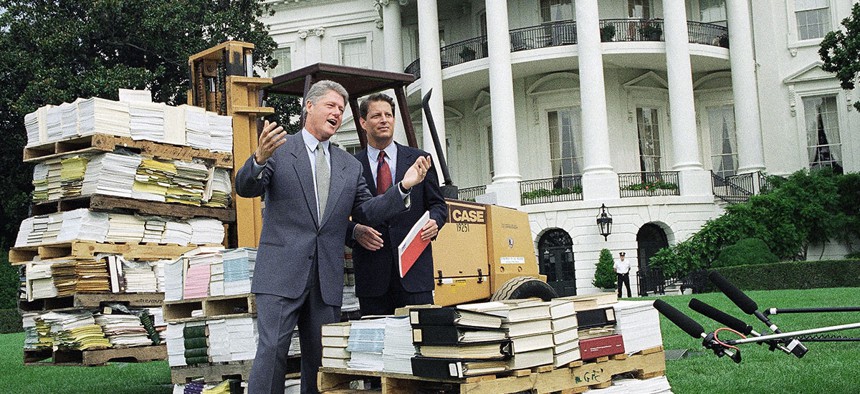Analysis: Reforming Government First Requires Understanding It
Jared Kushner’s new initiative promises to tap the expertise of the business community—but government isn't a business.
This week President Trump put his son-in-law Jared Kushner in charge of a new White House office, the Office of American Innovation. It will reportedly be staffed by former business executives who will operate like a SWAT team to bring new ideas to government.
This is an admirable undertaking. Like any large organization the government can always use fresh ideas. But the reality is that government is like the private sector only in some pieces of its operations—consulting business executives can be very useful, but a real government-reform effort must be led by people with in-depth knowledge of the government itself. Otherwise, it will simply be another initiative that is forgotten almost as soon as it is announced.
Consider the size and scope of the federal government. In 2014, it had revenues of $3.021 trillion dollars. This is more than the combined revenues of the 16 largest Fortune 500 companies at the time. It also had about 4.2 million employees (including uniformed military personnel) a size that equals the total employment of the six largest U.S. companies. It is impossible to find anyone who has ever run a company this big.
Most corporations, even very large ones, have a “core” business like building airplanes or selling hamburgers. The federal government does everything from contracting for state-of-the-art weapons systems to reviewing new drugs to sending out retirement checks. It has a wide variety of missions and a wide variety of personnel needs.
For many of the biggest and most expensive operations of the federal government, there is no private sector analog from which to take good ideas or best practices. For instance, no one in the private sector manages a nuclear arsenal. That’s what many people in the Department of Energy do. And no one in the private sector makes plans and conducts operations for the defense of Europe. That’s what they do over at the Pentagon.
And the federal government doesn’t actually “do” much of what it pays for. In a whole host of areas, from clean water to drug counseling, the federal government sends money to states and localities where other government officials or private-sector contractors actually do the work. Tackling the opioid crisis is a very laudable goal, but the front lines in that fight are staffed by local law enforcement officials and drug counselors. Other than sending more money through the federal pipeline, there are limits to what can be done from Washington.
How can private-sector leaders be most helpful? When I helped Vice President Al Gore run the Clinton administration’s reinventing government initiative, we met with many corporate executives—especially ones who were famous for turnarounds. The first thing we learned was that it was near impossible to do a successful turnaround without the buy-in of the workers. I suspect that this advice still holds, even though it is now 24 years old. So far, the Trump administration has gone out of its way to insult federal workers in its attempts to “drain the swamp.” They will soon learn what all the feds know—the bureaucracy pre-dates and outlasts individual presidents.
The second thing we learned was that most corporate executives were horrified at the constraints under which the average government manager works. From the outdated civil-service rules and salaries that will not let them hire the talent they need, to budget rules that made the movement of money within agencies nearly impossible, federal managers are handcuffed in ways that few CEOs in private-sector organizations are. If Trump’s effort does nothing more than build a consensus in the Republican Party for “normalizing” the civil service and making budget rules more flexible, it will be a success.
This is not to say that the federal government can’t learn from the private sector—it can. But the best opportunities are at the operational level. The Army’s motor pool can probably learn a great deal from Hertz and Avis about keeping cars clean, reliable, and available. Those who want to improve health services for veterans can surely learn a great deal from those who run large, complex hospital systems.
There are, no doubt, many good ideas out there for improving government operations. But they need to be implemented and not just articulated. And that takes a fully staffed-out government. The Trump White House has barely begun to fill the critical second layer of government that is so important to the implementation of such initiatives.
The Clinton administration was the last to cut the size of government and balance the federal budget—all while avoiding government fiascos like the response to Hurricane Katrina under President George W. Bush or the Veteran’s Administration meltdown under President Obama. Both Bush and Obama made progress on government modernization, but during their terms, they both had bigger fish to fry: For Bush, there was 9/11, and for Obama, the financial crisis. Trump can tackle the hard work of government reform once again—but doing it is no easy task.
NEXT STORY: After Health Care Debacle, Trump Needs a Plan B



